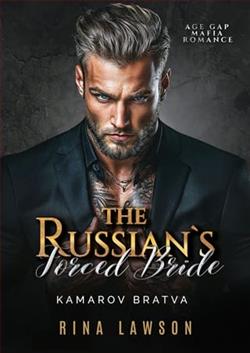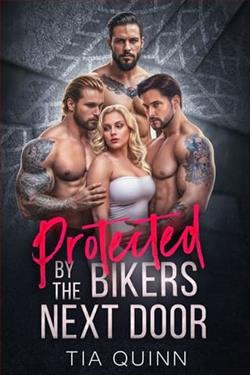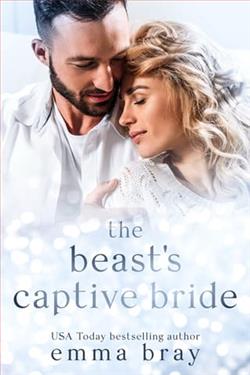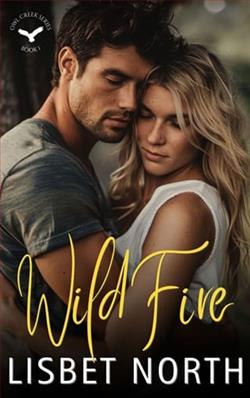Page 19 of Right Place, Right Time
‘Sorry,’ Adam says, looking apologetically down from the attic opening. ‘I probably should have said. This next case is pretty heavy too.’
I take the second suitcase from him, but this time it really is heavy so I don’t quite get hold of it properly. It falls from my hands onto the floor next to me and the lid flies open.
‘Are you OK?’ Adam asks, poking his head out from the attic entrance.
‘Yes, I’m fine. Sorry about that. Oh, there’s some photos.’ I bend down and lift up a couple of the pictures that have fallen from the case. ‘In fact, it looks like this whole case is full of old photos and albums.’
Adam climbs down the ladder and peers inside the case with me. ‘I don’t know about you, but I could do with a break from that attic for a bit – it’s very musty up there. Why don’t we take a look through these for a while? Maybe they’re just what you’re looking for to tell you more about my grandfather?’
We sit on the floor either side of the suitcase and begin pulling out bunches of photos tied together with ribbon and string, and old photograph albums with leather covers and thick black pages displaying a mix of black-and-white and colour prints.
Luckily for us, the backs of many of the photos have been written on in black ink with dates and names.
‘I think this must be a photo of your grandfather outside his bank,’ I say, handing him a photo of a smart-looking man in a suit standing outside the Lloyd’s bank building in Sidney Street, one of the main shopping thoroughfares in Cambridge. ‘It saysGeorge, June 1974.’
‘Yes, that’s him,’ Adam says, looking at the photo. ‘I remember him still looking a bit like that in the late eighties, early nineties – slightly smaller flares on his trousers by then, though! They’re some humdingers, aren’t they?’
We both smile at the man. While the rest of his brown suit is smart and tailored, the matching flared trousers overhanging his brown lace-up shoes would easily date the photo for us, even if this information wasn’t helpfully noted on the back.
‘These are from my grandparents’ wedding day,’ Adam says, passing me an open album.
I look down at the photos and see a young couple looking extremely happy in front of a church. Underneath the photos, in neat handwriting, is writtenLily and George, Wedding Day, June 1952.
‘My mother was born two years after that in 1954,’ Adam says. ‘She was thirty when she had me.’
We continue looking through the photos and see more of Adam’s family.
‘Is this you with your mother?’ I ask when I spy a photo titledSusan and Adam, Easter 1984. ‘You don’t look very old there – a couple of months maybe?’
Adam takes the photo album from me and gazes longingly at it.
‘Yes, that’s her.’ He runs his finger gently across the photo. ‘I’ve never seen this before.’
‘I’m pleased I made you go up into the attic now,’ I say quietly. ‘I was feeling a bit guilty when you were lugging all those boxes down.’
Adam lifts the photo from the album. ‘I’m going to keep this,’ he says, still looking at it. ‘Maybe get a frame for it too.’
‘I think that’s a lovely idea. Perhaps there’s some more buried in here you can put aside to frame.’ I look at the album again. ‘Oh, what’s this?’
Hidden behind the photo of Adam’s mother, there seems to be another photo – but it’s much larger than the others, so I can only see part of it. ‘I think there’s another, bigger photo hidden behind these others,’ I say. ‘Look, it’s trapped between the two pieces of paper that make up the page.’
We begin to remove the other photos – carefully so we don’t damage them – and, piece by piece, as though we are doing a jigsaw in reverse, a new photo begins to reveal itself.
‘Ooh, who’s this?’ I ask as we pull the photo from its hiding place. This man looks a little like George did in his bank photo, but, this time, instead of a loose brown suit with flared trousers, the man is wearing a top hat, a black tailcoat, a waistcoat with a pocket watch, and some striped trousers. ‘Is it your grandfather in fancy dress, do you think?’
‘It does look a bit like him, I suppose. But, no, this is someone different. I think this might be my great-grandfather. Wait.’ He goes back to a previous pile of photos and finds a black-and-white photo of a man in a smart 1940s-style suit along with a dapper-looking trilby hat perched jauntily on his head. He reads the back of the picture. ‘Archie, Cambridge, 1939. He was actually Archibald Darcy – I do know that much about my great-grandfather. Do you know where this was taken in Cambridge?’
I take the photo from him. Alongside the old cars and the familiar sight of gowned students riding bicycles, I recognise one of the many famous buildings Cambridge possesses. ‘He’s in front of the Senate House,’ I say. ‘You’ve probably seen it on King’s Parade. It’s where the students’ graduation ceremonies are held every year.’
I hold the 1939 photo next to the one that was hidden in the album. ‘It looks very much like the same man in the two photos, doesn’t it? But how can it be? Even though it’s taken in exactly the same place as the previous photo, there’s a horse and carriage in the larger one, and all the people in the background are dressed like Victorians. Perhaps it’s another relative of yours?’
‘Maybe, but the guy in this Victorian photo looks the spitting image of my great-grandfather in the wartime one, doesn’t he?’
‘Yes, he really does. Perhaps it’s his father, so your great-great-grandfather? Actually, he must be even further back than that if he’s from the Victorian times.’
‘Does it have anything written on the back of that photo like some of the others do?’ Adam asks.
I turn the photo over. ‘It saysArchie, Cambridge, 1850.’ I look at Adam. ‘That can’t be right, though? Are theretwo Archies in your family, do you know? Is Archibald a family name passed down through the generations?’















